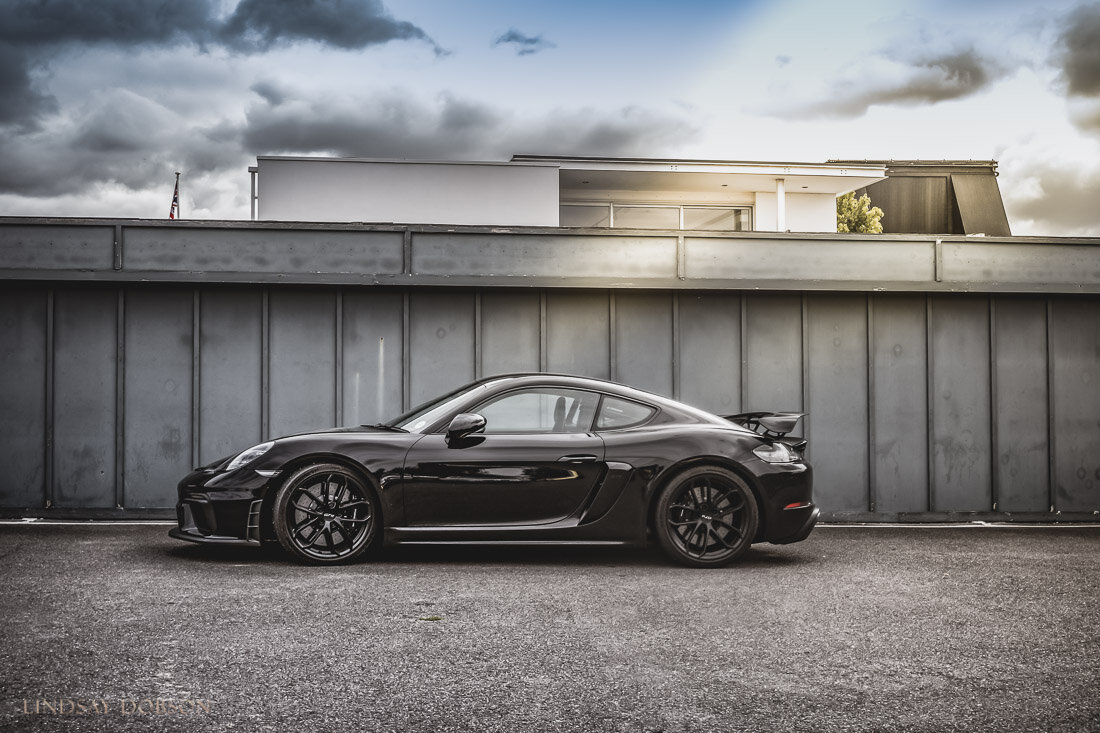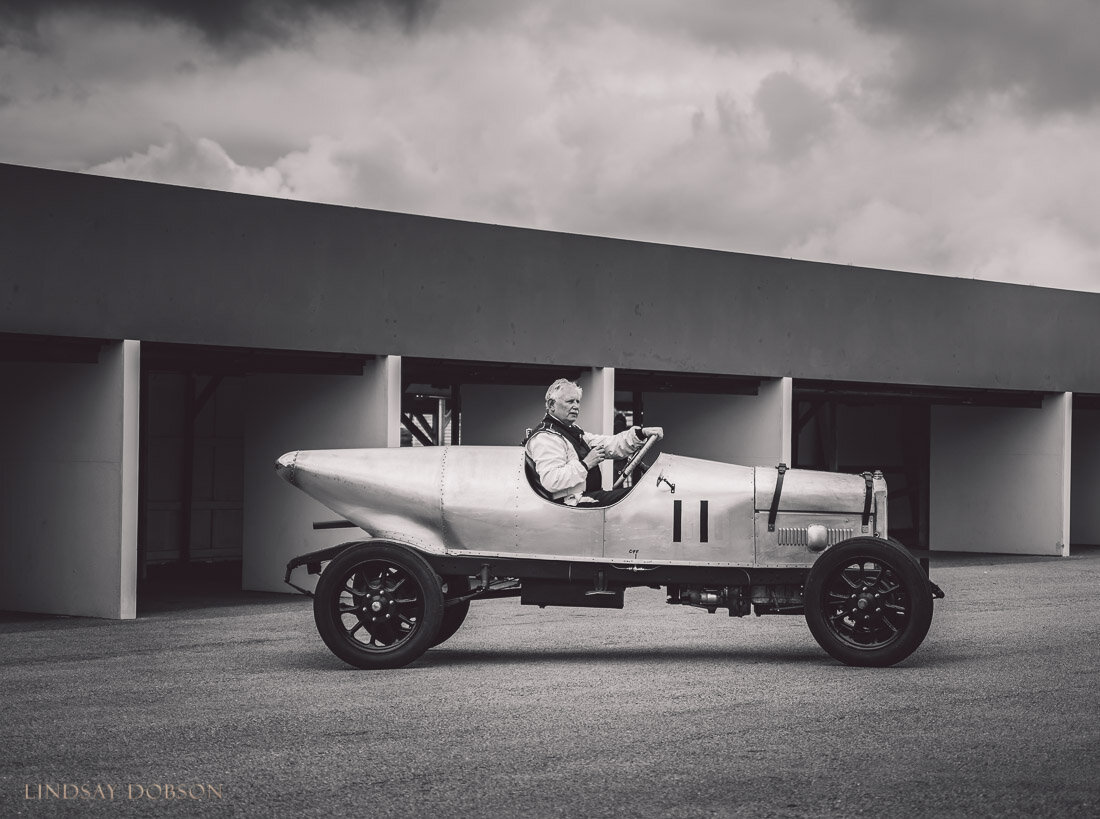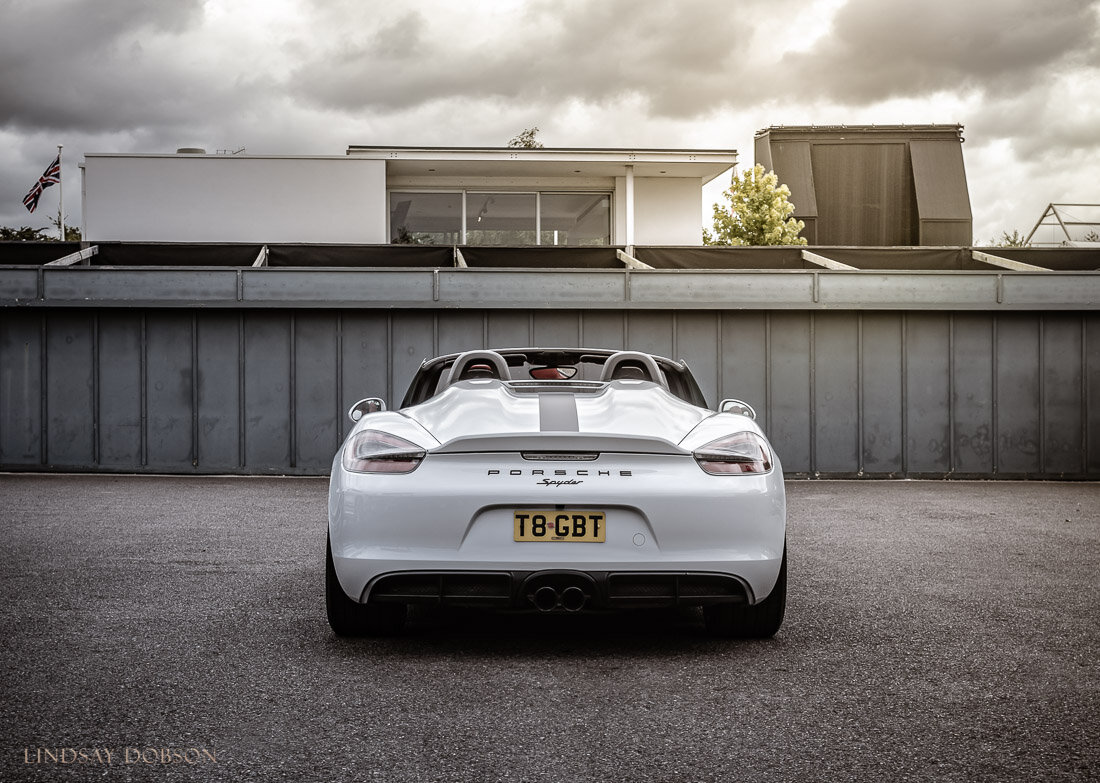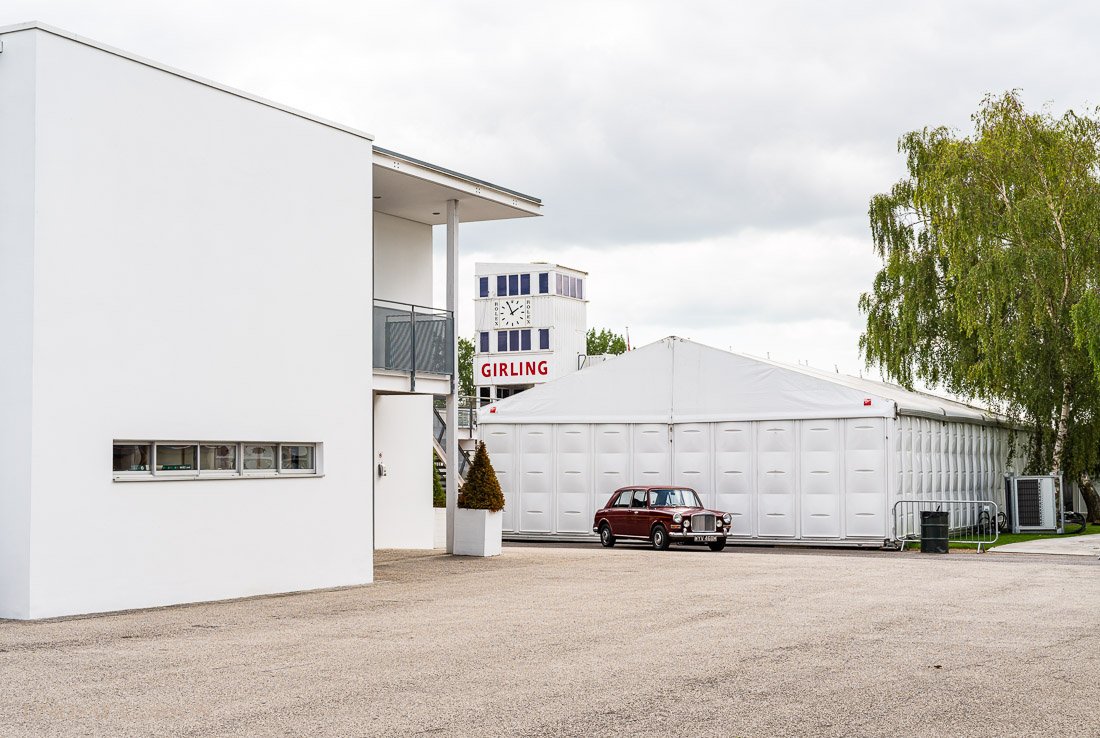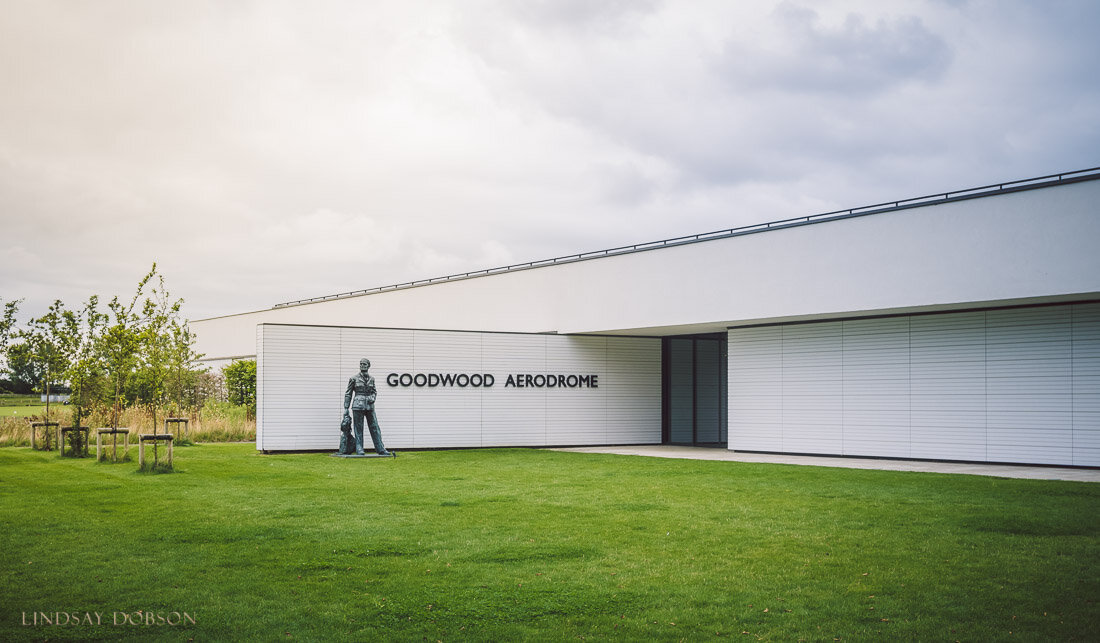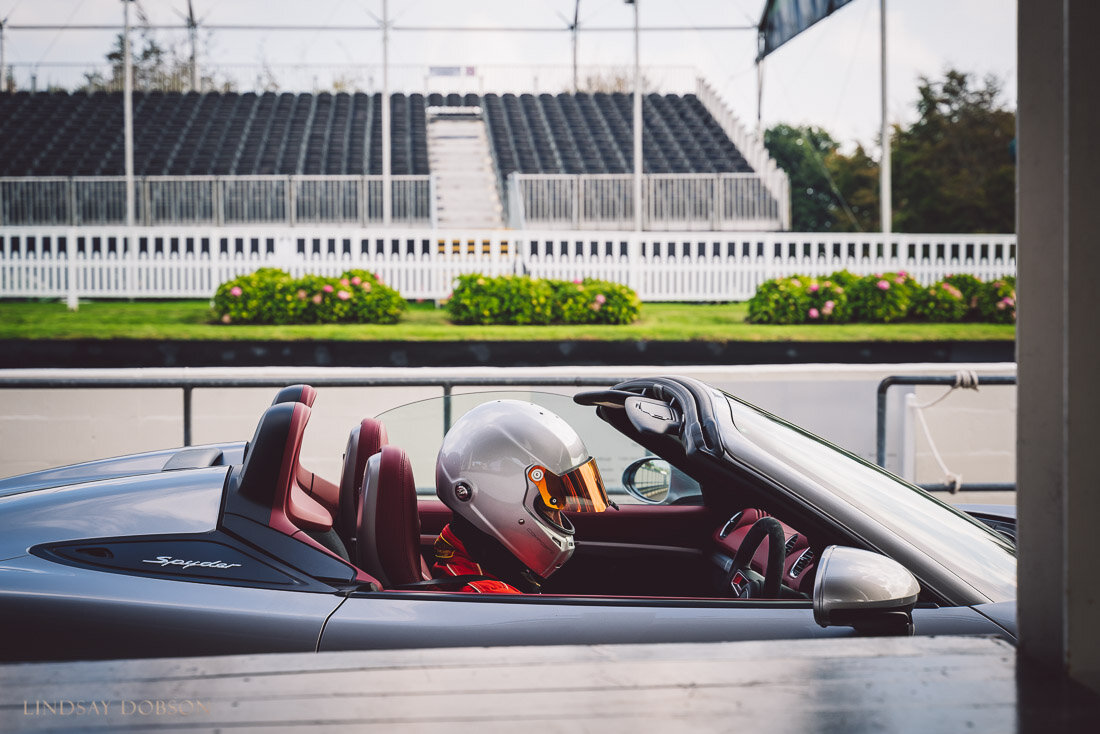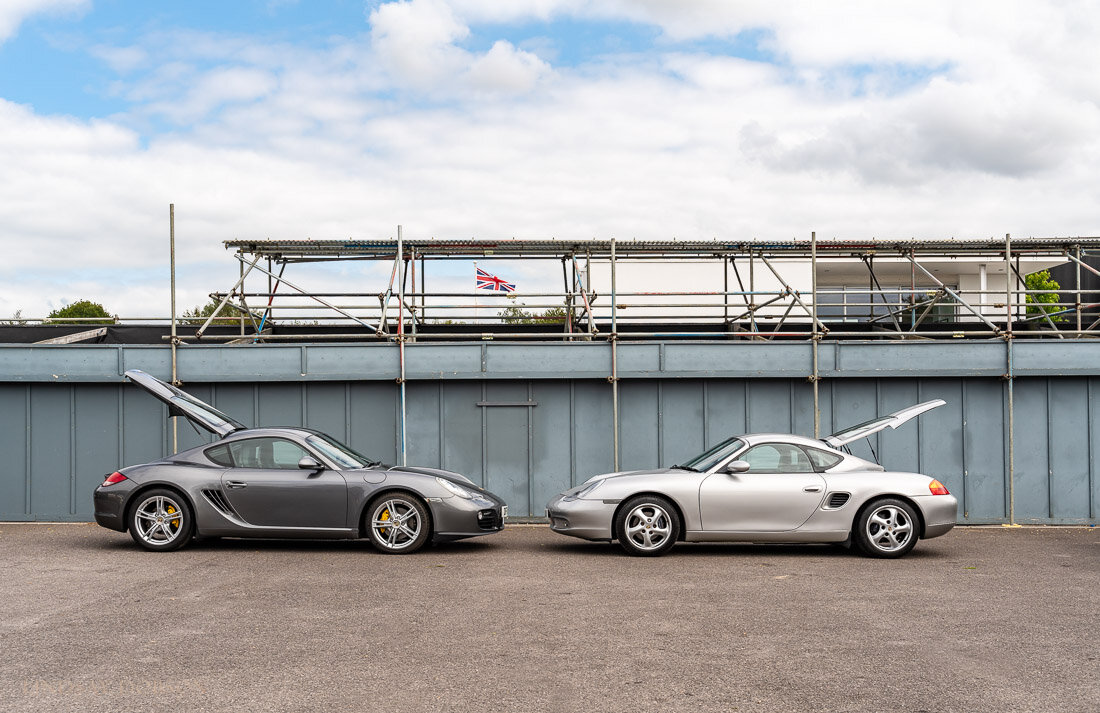Car Photography at Goodwood Motor Circuit, Chichester
Since we’re in the Personal section of my website, I’m going to talk about a subject I truly love. I’ve been a car enthusiast for more years than I can remember. I went from being a biker in my late teens to dreaming about sports cars from my early 20s. Like most, the financial rigours of university life led to a succession of rather rough Ford Escorts until my late 20s saw something of a breakthrough.
This article is about my long-standing relationship with Porsche, my current cars, and the affection I have for Goodwood motor circuit (which isn’t far from where I live in West Sussex). To get things rolling I’ll start with some car and automotive photography hints and tips.
Automotive Photography in West Sussex
Great car photography locations are everywhere. The general rule is to make sure the environment you choose complements the car.
today’s tip
Older classic cars often look their best with a traditional or rustic backdrop, such as a country house or a street of older buildings. A more modern sports car on the other hand will probably look terrific amongst urban concrete or driving on a winding road or racetrack. Context and background are everything. Get out there and find some interesting spots to photograph your car!
An ideal place to start would be your local motor circuit. There are opportunities to capture a wide range of images and to work with speed and movement. Don’t be self-conscious - pretty much everybody who goes to these events will have a camera of some sort in their hands. Shouting about the day on social media or a personal webpage like this is a fantastic way to spread the word and help to promote the benefits of an enthusiastic group or community. Bear in mind that depending on where you are (racetracks are private property) your photos should ideally be limited to personal, artistic, newsworthy, or editorial use unless you have specific permission from the site holder.
If anybody you encounter takes exception to their inclusion in your field of view then arguably they would be better off staying at home. Much as I cringe at my picture being taken, when we attend events like this we have to understand that our cars and our mugs are going to end up all over the place - it’s all part of the fun. Providing someone isn’t harassing you then just accept that photography is a massive part of the day. As a long-term writer on privacy and photographers’ rights you might be interested in my article (it’s a few years old but there have been no material changes): Taking Pictures of People and Property
Back to the pictures - what sort of photo opportunities should you be looking for? Cars are fantastic things to photograph. You can move around them (observing any necessary safety protocols of course) until you find the best angle for the light you have and the background. Background is everything, and it’s the first thing you need to have a look at before pressing the shutter. At car events we can’t always do much about the quality of the light we find on the day, but we can try to minimise undesirable light by changing our shooting angle. An interesting background adds important narrative. Here are some typical options:
Full-length side profile - the purpose is to document the shape and form of the car
Vary your distance and position as you rotate yourself around the vehicle, capturing each angle on the quarters
Close-ups and details - wheels, badges, grilles
Interiors
Driver interaction - in the pits, waiting in line to enter the track
Environmental shots - these are wider images where the car/s are smaller in the scene. These photographs provide information and context, and creative compositions
Motion - capturing a sensation of speed as the cars move around a track or road
A few simple tips can also help to really improve your results:
Early in the morning or at the close of the day will almost always offer good light (I especially enjoy warm directional sun)
Avoid shooting at eye level - do that for yourself and you’ll see that most cars just don’t look right
It’s useful to have the wheels turn slightly towards you
Shoot with the lowest ISO setting available - this is because car photographs tend to have slightly stronger postprocessing which can amplify image noise
Turning the headlights on or depressing the brake pedal will usually add a little more impact to the photograph
A polarising filter can be useful to minimise harsh reflections
Capturing Motion in Car Photography
I love capturing motion in car photography and this is something which takes a little bit of practice. By maintaining focus on our subject and using a relatively slow shutter speed we can keep the car sharp enough whilst introducing motion blur to the background. The short term for this is ‘panning’.
The general premise is this: the slower your subject, the slower your shutter speed. 1/100 sec is a good start with road-speed cars (probably 1/30 with slow moving cyclists or 1/60 for faster cyclists). When shooting cars speeding along a racetrack I’ll choose a shutter of anything from 1/100 to 1/200 depending on my purpose and lens choice. The slower the shutter speed the more careful you need to be about using a steady side to side movement with no upward or downward deviation. The slower the shutter speed, the harder it is to get the subject sharp – so expect a high failure rate. You can use whichever camera settings and modes you like, providing you understand them. It makes sense to use Tv mode and Auto ISO, or M mode with Auto ISO.
I use continuous autofocus and the centre focus point to lock onto the car (if you use back button focus, simply keep the button pressed) and follow the car as it goes past you, and burst mode. You won’t normally have to worry about messy backgrounds because these will be blurred out. If you want very shallow depth of field you’ll probably have to use an ND filter to get a wide enough aperture.
The longer the focal length (or the closer the subject) the harder it is to pan, so getting plenty of practice to understand your limitations is vital. For the motion shots in this article I was using a 28-75 mm lens on a full frame camera. At their nearest point the cars were approximately 30 feet away.
If panning with lens stabilization on, set the stabilisation mode to 2.
How much motion you want to capture is of course a matter of taste. You may want to preserve more of the context at the expense of speed, or you may want the drama of an intensely streaked and colourful background and the car standing out. I find the latter works brilliantly for supercars, older classic cars suit less extreme motion effects.
Mid-Engine Porsche - My Car Ownership Journey
Back in the 1990s a hot hatch was every lad’s dream, or in my case the dream of many a ‘ladette’ (as girls like me were referred to in those days, if we dared to show any technical traits). I have to say that the car I enjoyed owning the most was my mark II VW golf GTI, in metallic sage green with the distinctive red stripe and BBS alloys. It was fast (for its day), comfortable on long journeys, great fun to drive, and something of an icon. I then moved to the Mk IV which seemed disappointing and sanitized by comparison. Neither was particularly reliable – mostly electrical issues.
By then I was nearing 40 and I started leaning towards a more mature yet no less fun choice - and that’s when my love affair with Porsche began. Initially I had a hankering for an Audi TT. Thank goodness the crowd on Pistonheads talked me out of that one - I feel like I dodged a bullet! Not because they aren’t great cars, a TT is a lovely thing to own. But I wanted to spend my money wisely on a vehicle I might hang on to, and this is where Porsche is a fine (albeit more expensive) choice. A well chosen Porsche model will rarely show its age. They’re rock solid, reliable, and if you intend to keep it you may well end up with a collector’s piece rather than a car which simply feels old and dated.
I’m in my mid 50s now, and I’m very much a mid-engine aficionado. I’m fortunate enough to have gained two of them (although the grey Gen 2 Cayman pictured below belongs to David). Owning my first Porsche paved the way for a hobby like no other. Car ownership, particularly specialist cars, is a social and convivial world. There are endless clubs and groups where new friendships can be formed and information freely shared. But as my work as a full-time photographer started to leach every minute of free time, I entirely lost touch with my car focused communities. The years passed by in a blur of work-related martyrdom, with my Porsche becoming more and more of a garage ornament. She’s an excellent example of an early Boxster - but with a fascinating twist (more on that in a moment). Incidentally my work car is a black VW Tiguan Sport – he’s solid and dependable, quick enough, and super comfortable on long runs.
As the car which undeniably saved Porsche, there is no doubt that top-notch early examples of Boxsters are becoming scarce and prices are rising. Despite being launched in 1997 the original Boxster still has a marvellously current look to it, but with unmistakably classic lines.
Over the last few weeks I’ve returned to Goodwood, either just to meet up with someone for coffee or to go and watch a track day. The photographs in this post are from those outings - the recent Porsche Club GB track day being great fun. I realised how much I missed these excursions. After the isolation of lockdown it was fantastic to meet safely outdoors and enjoy some light hearted company, with a sound track of Porsche engines. Sharing tips and experiences can be priceless, and most car enthusiasts enjoy being helpful.
I don’t track ours but I love doing laps as a passenger. Below: Ashleigh on the left and Bambi on the right.
987 Gen 2 Cayman and 986 Boxster Zeintec
Bambi is arctic silver and she’s a late 1998 base 986. Many people think she’s a Cayman because she has a bespoke upper body shell and a hatch. She also has ballistics grade glass, this isn’t uncommon in South Africa where her upper body came from. This was designed a very long time ago by a Swiss company called Zeintec for the racing Boxsters. It was said to slightly predate the designs for the Cayman (hence no major objection from Porsche). The venture proved to be very short lived and only a few dozen of these upper bodies were made - and in only one part of the world. South Africa has long had a fine reputation for its exemplary GRP moulding and the top section and hatch for my car was custom-made and then flown to me in the UK. This is exactly what a 986 Cayman would have looked like, had Porsche decided to go down that route. And I wish they had. I’m often told it has a sleek classic look when compared to our (equally lovely) slightly curvier meteor grey 987 Cayman.
On a less positive note, I find every trip to the workshop traumatic. In fact it’s rare for me to get my car back from routine servicing or a minor repair without something being disturbed or even damaged by the technicians who work on her. Over the years this has been anything from noticeable scuffs, minor scratches, torn seals, or a part damaged while something nearby was being tended to. I’m not the only Porsche owner to suffer a sleepless night before a workshop visit, it’s disappointingly commonplace. I try to do as much of the more accessible jobs as I can myself, and I have to confess that the thought of anybody else even driving Bambi makes me a little queasy. Taking it in for attention is like watching someone manhandling your life partner. When you have a classic or cherished car you have an intimate relationship with it - you know every inch of your car so well. The cost of repairs is the same irrespective of your Porsche’s age or value.
I can’t see myself parting with Bambi, but I’d like to add a 981 to my collection as more of a daily driver. A bright colour will be in order as well - I’m loving the Viper Green Cayman in one of the photos above!





